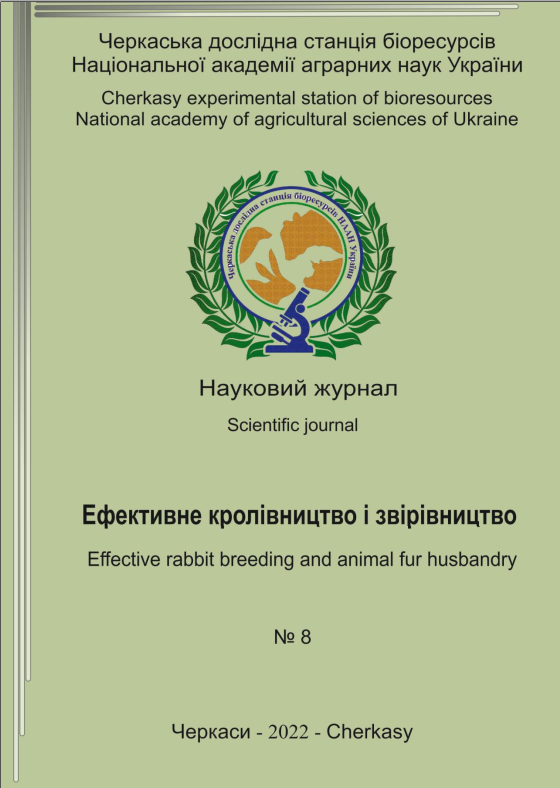CHANGES IN THE BLOOD PARAMETERS OF RABBITS DUE TO DRINKING SULFUR COMPOUNDS
DOI:
https://doi.org/10.37617/2708-0617.2022.8.83-91Keywords:
sulfur compounds, nanotechnology, mineral substances, blood parametersAbstract
The article presents the results of blood parameters of female rabbits under
the influence of sulfur citrate and sodium sulfate on their body. The research was
carried out on female rabbits of the second breeding of the Hyla breed at
Gorlytsia, village. Dobryans of Horodotsky District, Lviv Region. Female rabbits
of the control group were fed without restriction full-rational granulated
compound feed with free access to water. The animals of the 1st experimental
group were fed the feed of the ration of the control group and drank sulfur citrate during the day, at the rate of 8 μg S/kg of body weight. Females of the II
experimental group were fed with feed of the diet of the control group and given
sodium sulfate in the amount of 40 mg S/kg of body weight with water.
Supplements were given to female rabbits 14 days before insemination and up to
20 days of lactation. In the preparatory period on the 10th day from the beginning
of the study and in the experimental period on the 20th day of lactation, blood
samples were taken from the marginal ear vein of female rabbits for hematological
and biochemical studies. It was established that drinking sulfur citrate at the rate
of 8 μg S/kg of body weight in the diet of female rabbits 14 days before
insemination and up to the 20th day of lactation increased the number of
erythrocytes (Р<0.05), leukocytes (Р<0.05), and granulocytes (Р<0.05),
hemoglobin concentration (Р<0.05), average hemoglobin content in erythrocytes
(Р <0.05), the distribution width of erythrocytes (Р<0.05), activated protein
metabolism, which was characterized by a higher protein content (Р<0.05) and the
activity of AST, ALT and alkaline phosphatase, respectively (Р <0,05-0.01) in
blood on the 20th day of lactation compared to the control group.


